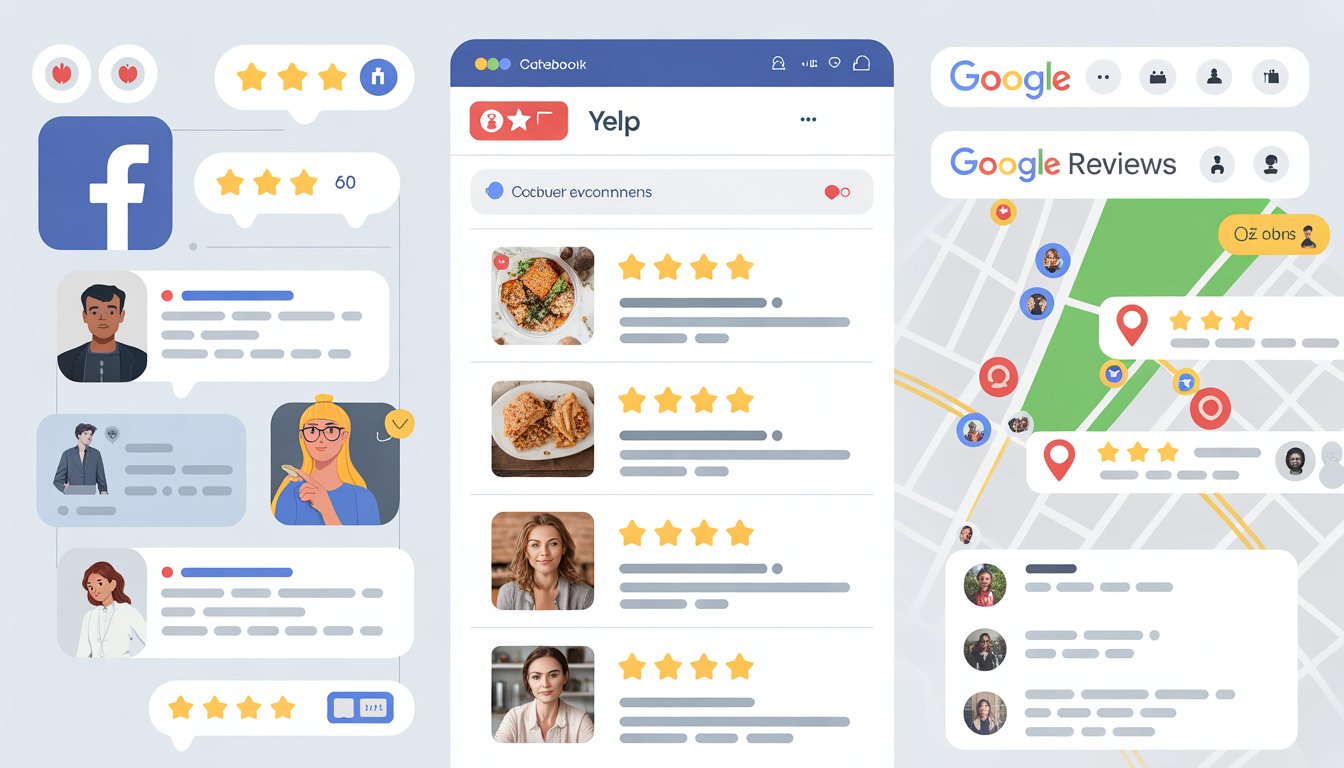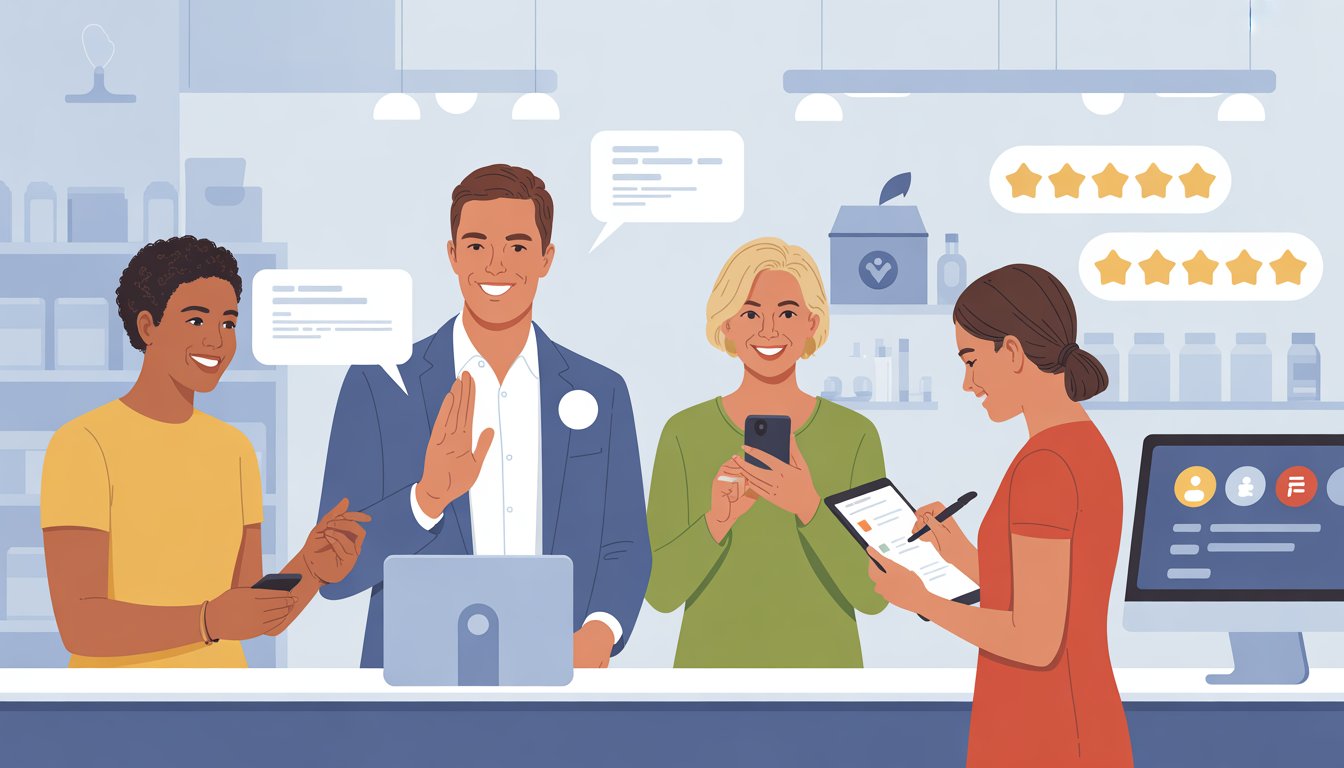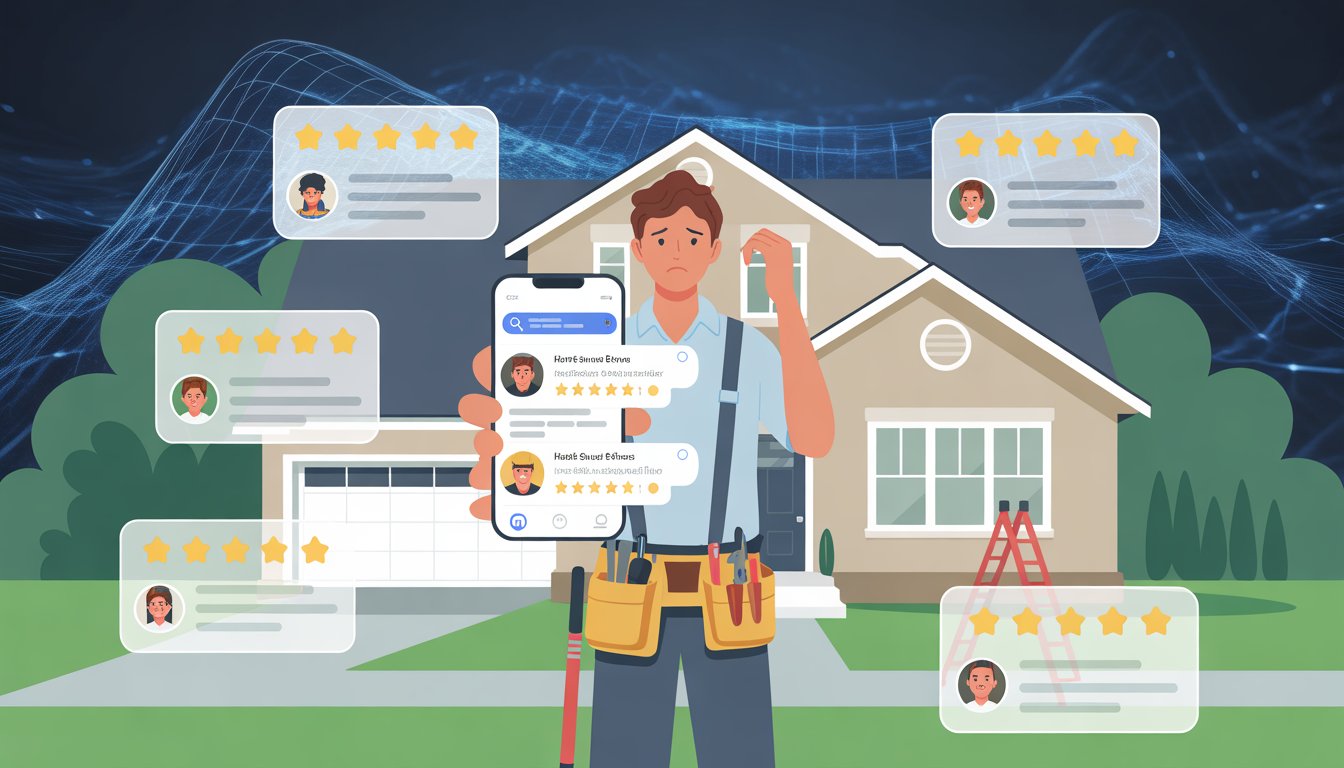The pandemic changed how people shop and connect with businesses in their neighborhoods. Many customers began supporting local stores more during lockdowns when big chains were harder to reach.
This shift created new bonds between shoppers and small business owners.
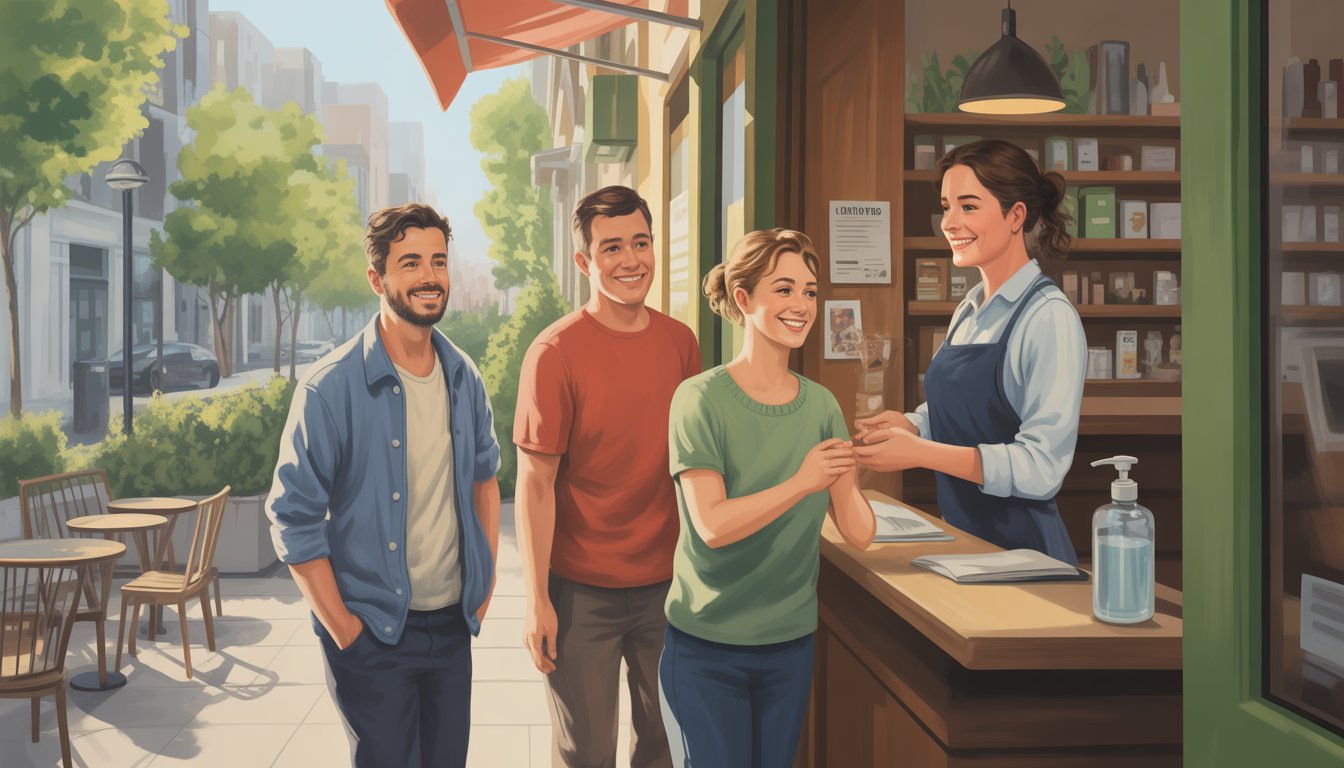
Small businesses that struggled during shutdowns often received extra patience from customers who understood the challenges. People became more willing to wait longer for orders or accept limited options.
Customers now care more about helping their communities survive tough times. They want to see local shops succeed and are willing to give them more chances when things go wrong.
Key Takeaways
- Customers show more patience and understanding toward local businesses since the pandemic began
- People actively choose to support neighborhood stores to help their communities recover and grow
- The bond between local businesses and customers has become stronger through shared challenges
Are Customers More Lenient With Local Businesses Post-Pandemic?
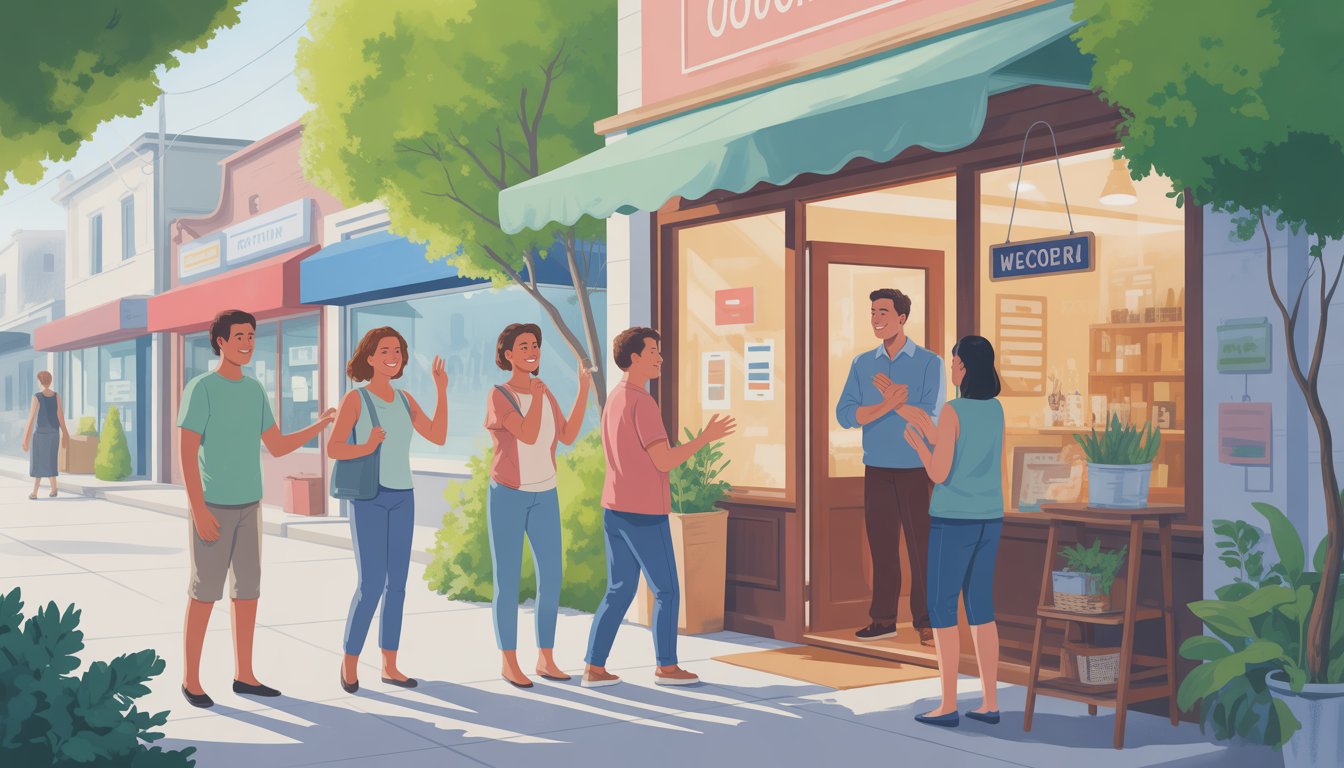
The pandemic changed how customers view local businesses. People now show more patience with small shops and are willing to overlook issues they might have criticized before 2020.
Key Shifts in Customer Attitudes
Customers developed deeper emotional connections with local businesses during the pandemic. Nearly 75% of Americans say the pandemic made them appreciate their local shops more than before.
Customers are now more understanding when local businesses face challenges. They recognize the struggles these shops went through during lockdowns and supply chain issues.
Key attitude changes include:
- Greater patience with longer wait times
- Understanding of limited inventory
- Acceptance of higher prices
- Willingness to adapt to new shopping rules
More than 65% of Americans visit their main street shops at least a few times per month. When local shops close, nearly 75% of people feel sad, worried, guilty, or angry about the loss.
Customers also travel farther to support local businesses. Research shows people are willing to drive up to 30 minutes to visit their favorite local shops.
Factors Influencing Increased Leniency
Several specific factors drive customers to be more forgiving with local businesses. The biggest reason is economic—people understand small businesses faced unique hardships during the pandemic.
Customers witnessed firsthand how local shops struggled with closures, reduced hours, and staffing shortages. This created empathy that continues today.
Financial support demonstrates this leniency:
- Americans spend an extra $150 per month on local shops
- Consumers are willing to spend nearly $2,000 more yearly to keep favorite shops open
- Suburban customers especially want to contribute to local economies
Social media also plays a role. More customers defend local businesses online when others complain.
They share positive reviews and encourage friends to shop locally.
The personal relationships customers built with shop owners matter too. More than 80% of customers visit local stores to socialize with staff and ask for recommendations.
Contrasts With Pre-Pandemic Expectations
Before 2020, customers expected local businesses to compete directly with big chains on price and convenience. Those expectations have shifted significantly.
Pre-pandemic shoppers often chose the fastest, cheapest option available. Now customers prioritize values like community support over pure convenience.
Major expectation changes:
Pre-PandemicPost-PandemicLowest prices expectedWilling to pay premiumImmediate availability requiredPatient with stock issuesExtended hours demandedFlexible with reduced hoursSelf-service preferredValues personal interaction
Customers used to switch stores quickly if disappointed. Now they give local businesses multiple chances to fix problems.
Customers are more willing to pre-order items, wait for special orders, and accept "sold out" as a reasonable answer. They understand local shops can't stock everything like large retailers.
The voting booth shows this shift too. 85% of consumers say a political candidate's support for small businesses influences their vote choice.
Impact of the Pandemic on Local Business-Customer Relationships
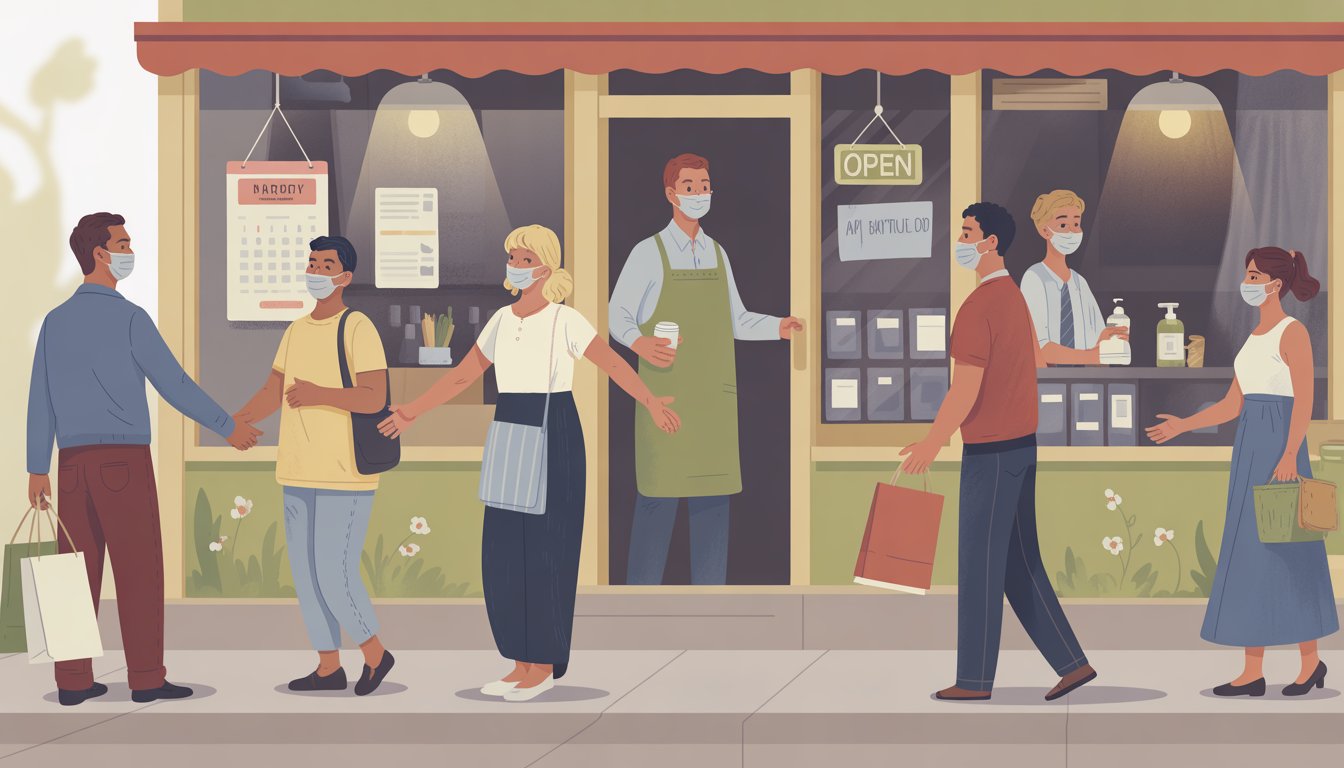
The pandemic created a wave of community support for local businesses while forcing new ways of communication. Customers began viewing local and national brands differently, with many preferring businesses that showed genuine care during difficult times.
Community Support and Solidarity
Local communities rallied around small businesses during the pandemic's peak. Many customers actively chose to shop local to help their neighbors survive economic hardship.
This support came in different forms. Customers bought gift cards when stores were closed.
They ordered takeout more often from local restaurants. Many shared social media posts promoting their favorite local shops.
Key community support behaviors included:
- Purchasing gift cards during lockdowns
- Ordering takeout and delivery from local restaurants
- Sharing business posts on social media
- Choosing local over chain stores when possible
The pandemic made customers more aware of how their spending affects their community. They saw local businesses struggle while large corporations remained stable.
Many customers developed personal relationships with business owners during this time. They learned owners' names and stories.
These connections made shopping feel more meaningful than just buying products.
Adaptations in Communication Styles
Communication with customers had to change quickly when the pandemic hit. Businesses started sharing more personal updates about their challenges and safety measures.
Social media became the main way to stay connected with customers. Updates about store hours, safety rules, and business operations were posted frequently.
Customers appreciated this honest communication. Businesses that shared detailed cleaning procedures and mask policies built more trust.
Common communication changes:
- Daily social media updates about operations
- Email newsletters with safety information
- Text messages about pickup and delivery options
- Personal videos from business owners
The tone of business communication became more personal and vulnerable. Owners shared their fears about staying open and thanked customers for their support.
This honesty created stronger bonds than traditional marketing messages.
Perceptions of Local Versus National Brands
Customers began viewing local and national brands very differently during the pandemic. Local businesses seemed more caring and connected to the community's needs.
National chains appeared distant and focused only on profits. Local businesses felt like partners struggling alongside their customers.
This perception shift gave local businesses a major advantage. Customers noticed which businesses truly cared about their community.
Those that donated meals to healthcare workers or supported local causes earned lasting loyalty. Businesses that only focused on sales lost respect.
Factors that improved local business perception:
- Community donations and support
- Flexible return and exchange policies
- Personal check-ins with regular customers
- Quick adaptation to customer needs
Many customers discovered new local businesses during lockdowns. They tried local delivery services and neighborhood shops for the first time.
Some of these new relationships became permanent shopping habits.
Changing Consumer Expectations and Behaviors
The pandemic shifted how customers view business challenges and service standards. People now show more understanding when local businesses face operational difficulties, while also expecting greater flexibility in policies and communication.
Tolerance for Delays and Shortages
Customers became more patient with supply chain issues during the pandemic. Many learned that global disruptions affect small businesses differently than large corporations.
Common areas where customers show more tolerance:
- Shipping delays of 2-3 extra days
- Limited inventory on popular items
- Longer wait times for custom orders
- Seasonal menu or product changes
About 75% of consumers tried new shopping behaviors during COVID-19. This experience taught them about business operations they never considered before.
However, this patience isn't unlimited. Customers expect clear communication about delays and want updates on order status.
Local customers often prefer supporting small businesses over switching to big retailers. They understand that smaller businesses have less bargaining power with suppliers.
Flexible Return and Cancellation Policies
Customers now expect more lenient policies from local businesses. The uncertainty of the pandemic made people value flexibility in their purchases.
Key policy changes customers appreciate:
- Extended return windows (30-60 days instead of 14)
- Store credit options instead of cash-only refunds
- Easy cancellation for services and appointments
- No-penalty rescheduling for events
Customers understand that local businesses might not match Amazon's return policy. But they do expect reasonable accommodations for genuine issues.
Digital-first behaviors accelerated during the pandemic. Customers want simple online processes for returns and cancellations when possible.
Many customers will pay slightly higher prices for better service policies. They view flexible policies as insurance against future disruptions.
Response to Service Limitations
Customers adapted to reduced services during lockdowns. Many still accept limitations if businesses explain the reasons clearly.
Service changes customers commonly accept:
- Reduced operating hours
- Appointment-only services
- Limited capacity or seating
- Modified service offerings
Customers appreciate transparency about staffing challenges. They understand that hiring difficulties affect service speed and availability.
Businesses should communicate changes through multiple channels. Use social media, email, and storefront signs to keep customers informed.
Customers expect:
- Advance notice of service changes
- Clear explanations for limitations
- Alternative solutions when possible
- Consistent application of new policies
Managing expectations upfront is key. Customers become frustrated when they discover limitations after arriving at a business.
Challenges Faced by Local Businesses Post-Pandemic
Local businesses continue to face major hurdles as they work to recover from the pandemic's effects. Two key problems stand out: finding workers and dealing with supply chain issues, plus rising costs from inflation.
Labor and Supply Chain Disruptions
Finding good workers has become one of the biggest problems for local businesses. Many workers left their jobs during the pandemic and haven't returned to the same industries.
Local restaurants or stores might be running with fewer staff than before. This means longer wait times for customers and more stress on the workers who stayed.
Supply chain problems make things worse. Products that used to arrive on time now come late or cost more to ship.
Local shops might not have the items customers want in stock. These delays hurt customer trust.
When people can't find what they need at a local business, they might shop elsewhere instead. Small businesses have less power to negotiate with suppliers than big companies.
This puts them at a disadvantage when products are hard to get.
Inflation and Cost Pressures
Rising prices affect every part of running a local business. Neighborhood stores pay more for rent, utilities, and the products they sell.
Key cost increases include:
- Higher wages to attract workers
- More expensive shipping and delivery
- Rising rent and property costs
- Increased prices from suppliers
Local businesses often can't raise their prices as much as their costs go up. They worry about losing customers to bigger competitors who can absorb higher costs better.
Energy bills have gone up significantly. A local bakery or dry cleaner uses a lot of electricity and gas, making these increases especially painful.
Many small business owners are making less profit than before the pandemic. Some are using their personal savings to keep their businesses open.
Evolving Trust and Loyalty in the Local Marketplace
Local businesses have gained a significant trust advantage since the pandemic, with 84% of customers now trusting local businesses more than national chains.
This shift has created new opportunities for building stronger customer relationships through authentic communication and deeper community connections.
Role of Honest Communication
Customers expect transparency from local businesses more than ever before. When businesses communicate openly about challenges, changes, or limitations, customers respond with understanding and support.
Direct communication builds stronger bonds. Local businesses that share real updates about inventory, staffing, or safety measures create trust.
Customers appreciate knowing what to expect before they visit or order. Social media and direct messaging give businesses tools to stay connected.
You can respond quickly to concerns and explain decisions in real time. This personal touch sets local businesses apart from larger companies with scripted responses.
Admitting mistakes strengthens relationships. When businesses mess up an order or face delays, honest explanations work better than excuses.
Customers forgive local businesses more easily when they see genuine effort to fix problems. Community connections make authentic communication easier.
People know your story and struggles. They want to support you when you're honest about both successes and setbacks.
Impacts on Brand Loyalty
Local shopping loyalty has grown stronger since 2020. Research shows 71% of shoppers prefer buying from local stores, even when prices are higher.
This loyalty stems from personal connections and community values. When customers trust your business, they return more often and recommend you to others.
Local businesses benefit from word-of-mouth marketing that money can't buy. Your involvement in the community creates emotional bonds with customers.
Supporting local events, hiring locally, and partnering with other businesses builds loyalty beyond just products or services. Your personal service and community connection justify higher costs.
People value knowing who runs the business and supporting their neighbors' livelihoods. Local customers often choose to support struggling neighborhood businesses instead of switching to cheaper alternatives online or at chain stores.
Future Outlook for Customer Leniency Toward Local Businesses
Customer leniency toward local businesses will likely persist as support for small businesses remains strong. 85% of consumers say a candidate's support of small businesses influences their voting decisions.
Your business can benefit from understanding how these changes will evolve. Implement strategies to maintain positive customer relationships.
Potential Lasting Changes
Consumer expectations for local businesses have shifted permanently in several key areas. You can expect customers to maintain more realistic expectations about review counts and response times compared to large corporations.
Customers no longer expect local businesses to have hundreds of reviews. They understand that small businesses operate differently than big chains.
Your business can succeed with fewer reviews if they are authentic and recent. Your customers now show more patience with minor service issues.
They recognize staffing challenges and supply chain problems that local businesses face. This doesn't mean poor service is acceptable, but small mistakes are forgiven more easily.
Local news outlets have become important sources for business information. Almost half of adults use them to find reviews.
Your community involvement will continue to influence customer loyalty and forgiveness when problems arise.
Strategies for Sustaining Positive Relationships
Building on increased customer leniency requires specific actions to maintain trust and support. You need strategies that work with current consumer attitudes while preparing for potential changes.
Be honest about challenges your business faces. Customers appreciate transparency about staffing issues, supply problems, or service delays.
This honesty builds trust and maintains the leniency you currently enjoy. Get involved in local events, charities, and sponsorships.
Since consumers use local news sources for business information, your community presence directly impacts customer perception and loyalty. Create loyalty programs and special offerings that keep customers returning.
About 68% of money spent at local businesses stays in the community. Emphasize this benefit to maintain customer support during economic pressures.
Frequently Asked Questions
Consumer attitudes toward local businesses have changed significantly since the pandemic ended. Many customers now show greater support for small businesses while expecting new services and shopping options.
How has consumer behavior shifted towards small businesses since the end of the pandemic?
Customers now prioritize supporting local businesses more than before. About 75% of consumers plan to support local merchants as much as possible.
Many shoppers changed where they spend money during the pandemic. They moved dollars away from big chains to local stores.
The average person plans to spend 16% more at small businesses than before the pandemic. This equals about $100 per week in extra spending.
What are the key consumer trends impacting local businesses in the post-pandemic landscape?
Online shopping became much more popular during the pandemic. Many customers now expect local businesses to offer both in-store and online options.
Payment methods matter more to shoppers now. Businesses that offer different ways to pay attract more customers.
Curbside pickup and delivery services are now standard expectations. Customers want these options even when stores are fully open.
In what ways has the pandemic influenced the level of support consumers provide to local businesses?
During lockdowns, 86% of people continued supporting locally owned businesses. Many found new ways to help even when stores were closed.
About 77% of consumers tried virtual experiences from local businesses. This shows people wanted to stay connected with their favorite local spots.
Many customers ordered more takeout and delivery from local restaurants. About 60% increased their orders during the pandemic.
Why are consumers potentially more supportive of local businesses after the pandemic?
The pandemic showed people how important local businesses are to their communities. Many realized these businesses might disappear without support.
Customers saw how hard small business owners worked to stay open. This created more emotional connection and loyalty.
People missed going to their favorite local places during lockdowns. This made them value these businesses more when they reopened.
What do small businesses need to understand about post-pandemic consumer expectations?
Customers expect flexible shopping options. You need both in-person and online ways for people to buy from you.
People want multiple payment methods. Cash-only businesses may lose customers who prefer cards or digital payments.
Your customers appreciate businesses that adapted during hard times. They remember which businesses tried new things to serve them.
How should local businesses adapt to the changed consumer behavior resulting from the pandemic?
You should offer online ordering or shopping if you don't already. Many customers now expect this option.
Consider adding delivery or curbside pickup services. These conveniences became normal during the pandemic.
Stay connected with customers through social media and email. People want to know what's happening with their favorite local businesses.

